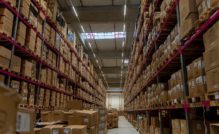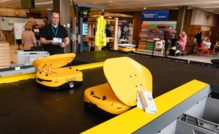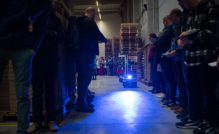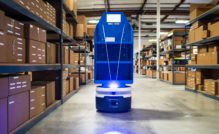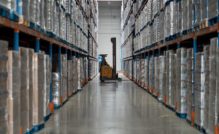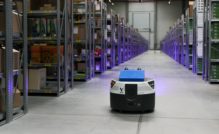3D simulation introduces processes without operational constraints

Changing warehouse processes and testing new approaches in retail is usually time-consuming and costly. Therefore, an effective solution is using 3D simulations, allowing everything to be tested quickly in a virtual environment without without any constraints on the real operation.
Nowadays, distribution centres and warehouses suffer from high staff fluctuations. Therefore, retailers are seeking ways to improve productivity and, at the same time, make it easier for employees to enter a new environment. However, there are many ways to approach process simplification, from incorporating voice picking to conveyors to robots. And that makes choosing the optimal solution all the more challenging. 3D simulations can help a logistician make a similar decision without having to stop part of the warehouse for a week.
With the help of modelling software, the retailer essentially gains a digital twin of the existing warehouse or part thereof, a demonstration of a certain process, or a preview of future premises and processes. They can then experiment there based on the parameters set and see which solution would have the best impact on productivity, see the synchronisation with other processes and any weak points. Thus, different scenarios can be tested, such as how different numbers of warehouse personnel can handle picking goods in otherwise long shifts. The system then processes all combinations and evaluates the best one.
From production to healthcare
The main benefit of 3D simulations is the fact that they reduce the time and costs associated with testing changes in a real environment. When introducing new processes or entire warehouses, the logistics engineer can set up and test everything and only go live when the optimal option is selected.
Major applications of the system is in logistics, in the simulation of material movement, in production, for the analysis of different scenarios, workload distribution, or in customer areas of shops and call centres. It can also make a similar contribution in infrastructure, where parking layouts are solved, and passenger flows at airports or station terminals are simulated. Likewise, in healthcare, for example, it can be used to manage crisis scenarios involving the personnel flow so that employees don’t meet so much during their shifts. Thus, a possible quarantine will affect as few people as possible.
The main benefits of 3D simulations
- Simulations of current and future processes and spaces in a virtual environment,
- Immediate comparison of changes and different scenarios (operator time, machine layout, etc.),
- Considerable time and cost savings compared to real-life testing,
- Adding 3D drawings in various formats, including Autocad,
- Simulating situations for limited human contact, whether warehouse operators or end customers on the shop floor (e. g., when people have to maintain two-meter spacing),
- Over 20 years on the market, proven and continuously innovated solutions.
Models are variable, and you need no license to use them. In addition, data can be uploaded from excel spreadsheets or parameters can be changed as agreed. Moreover, any non-standard elements can be programmed into the software.
Correct data is essential
It is important to have all the necessary data from the beginning for the model to work properly – trolley speed and capacity, number of workers, space layout, machine capacity and productivity, etc. Each model requires a different amount of data,so it’s all about defining the objective. As part of the output, the 3D simulation then offers detailed analyses, graphs, tables and statistics that make it easy to choose what innovations and processes are best for a given warehouse or space, or what still needs to be fine-tuned.
3D simulations are a powerful and effective solution not only for the retail sector, helping to facilitate decision-making when introducing new processes and changes to maximise the use of all resources and achieve the highest efficiency. They significantly reduce the time and costs otherwise associated with testing changes in the real environment.



